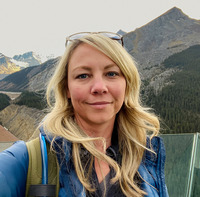
DISCIPLINE: Unconventional Reservoirs, Geoscience
COURSE LENGTH: 1 Day (Classroom)
CEUS: 0.8
AVAILABILITY: Public & In-House
WHO SHOULD ATTEND: Geologists, engineers, managers, field team involved with geosteered horizontal wells.
COURSE DESCRIPTION: The course will include intermediate-level review of the topics that most often impact the geosteering effort, including best practices that account for the most common sources of difficulty. We will start with a review of “good outcomes”, specifically including what defines a successful geosteering effort, plus examples from a variety of plays. Since best practices necessarily include understanding and recognition of potential pitfalls, we will take time to explore four categories of potential problems, their origins, how to recognize, and how to mitigate them:
True geosteering is always an interpretation of subsurface geology at a uniquely detailed level, regardless of the technology involved. But pre-drill geologic analysis almost never involves the level of “data density” revealed (and necessary) while geosteering, and it inevitably impacts the planning of any well and initiates an interpretive bias. Over-reliance on computer technology, over-confidence in pre-drill mapping, over-confidence in seismic data especially as to resolution, and interpretive bias will be addressed. Various geosteering techniques and technologies all have their own inherent strengths and weaknesses. These will be reviewed and illustrated. While-drill MWD-LWD data can be problematic several different ways. Problems are often easy to recognize and address, but they can also lead to severe degradation of a horizontal project if not recognized. We first consider the telemetry technology that delivers surveys and log curves while drilling. Next, we will look at potential pitfalls that are largely unique to Gamma data, which is overwhelmingly most often used, especially calibrations and “scale factors”. Additional content is devoted to other LWD log curves. Finally, but we will consider Positional Uncertainty – imprecision in directional surveys and the impact on geosteering interpretations. Additionally, there are avoidable pitfalls associated with “corporate culture” (inter-disciplinary dysfunction) and poor communication patterns. Reliable remedies are discussed. With the above issues in mind, we will turn to recommended best practices for each phase of the well: pre-drill phases, drilling the curve, landing the curve, drilling the lateral, and post-drill best use of results.
LEARNING OUTCOMES:
- Attendees should derive a more comprehensive understanding of the importance of geosteering and what realistically defines a geosteering success.
- It is expected that attendees will look more critically at pre-drill geologic work-up and potential impacts on the horizontal effort.
- Attendees should leave with better understanding of pitfalls inherent to various geosteering techniques.
- Attendees should learn to recognize LWD-MWD telemetry problems, some simple pre-drill considerations to avoid LWD telemetry problems before the well starts, plus mitigation options if the well is already underway.
- Attendees should gain a better recognition of deficient LWD data, especially Gamma curves, plus a few simple approaches when faced with these problems.
- Attendees will become familiar with Positional Uncertainty (survey imprecision), plus defensive strategies and rules of thumb to mitigate impacts.
- Attendees should acquire a better focus on the cultural issues at play within the horizontal well team, plus some easy communication strategies to reduce inter-disciplinary conflict and miscommunication.
- Attendees should come away with an improved understanding of best practices for each phase of a horizontal well from origination, through drilling, and into post-drill use of the new data.
COURSE CONTENT:
- Introduction and Definition of Successful Geosteering
- Specifically, What Is the Main Priority?
- “Successful” Geosteering – a Realistic Definition and Discussion
- Examples of effectively steered wells
- Examples of ineffectively steered wells
- Geosteering: A nightmare for perfectionists and egotists
- Terminology: Not in the Geologic Text Books, but Critical!
- Pre-Drill Geologic Analysis – Common Relevant Pitfalls
- Mostly a matter of resolution, plus over-dependence upon technology, over-confidence in deficient data, and interpretive bias.
- Mapping Styles, Mistakes, and Impacts – a very brief review
- Stratigraphic: “Layer Cake Geology”? White space in the map. Off-lapping? On-lapping? Thinning, thickening, & flattening surfaces. Diagrammatic illustrations, examples and outcrop photos.
- Structural: Invisible, detail-scale complexities, often big enough to matter.
- Geosteering Techniques – Advantages and Disadvantages
- Surface Logging – Entirely dependent upon accurate lag determination.
- Relying on simple Measured Depth data
- Relying on Measured Depth plus TVD logs
- Software: 3D Modeling Tools – No white space, right?
- Software: KBTVD-Based Software
- Common Procedural Issues
- Pitfalls in Directional Data
- Telemetry Problems
- MWD-LWD log curves
- Surveys – Positional Uncertainty
- Inter-Disciplinary Culture and Communications
- Priorities of Geologists versus Engineers versus Well Site Team
- Backgrounds of Geologists, Engineers, and Well Site Team
- The Resulting Conflicts & Intra-Team Diplomacy
- Handling Difficult Team Member
- Communication is Critical!
- Best Practices at Each Stage, from a Practical Standpoint
- Pre-Drill Phase
- Drilling the Curve
- Drilling the lateral
- Post-TD: Leveraging the New Data Effectively
- Examples of Geosteering Interpretations …
- What’s Right or Wrong with This Interpretation?
